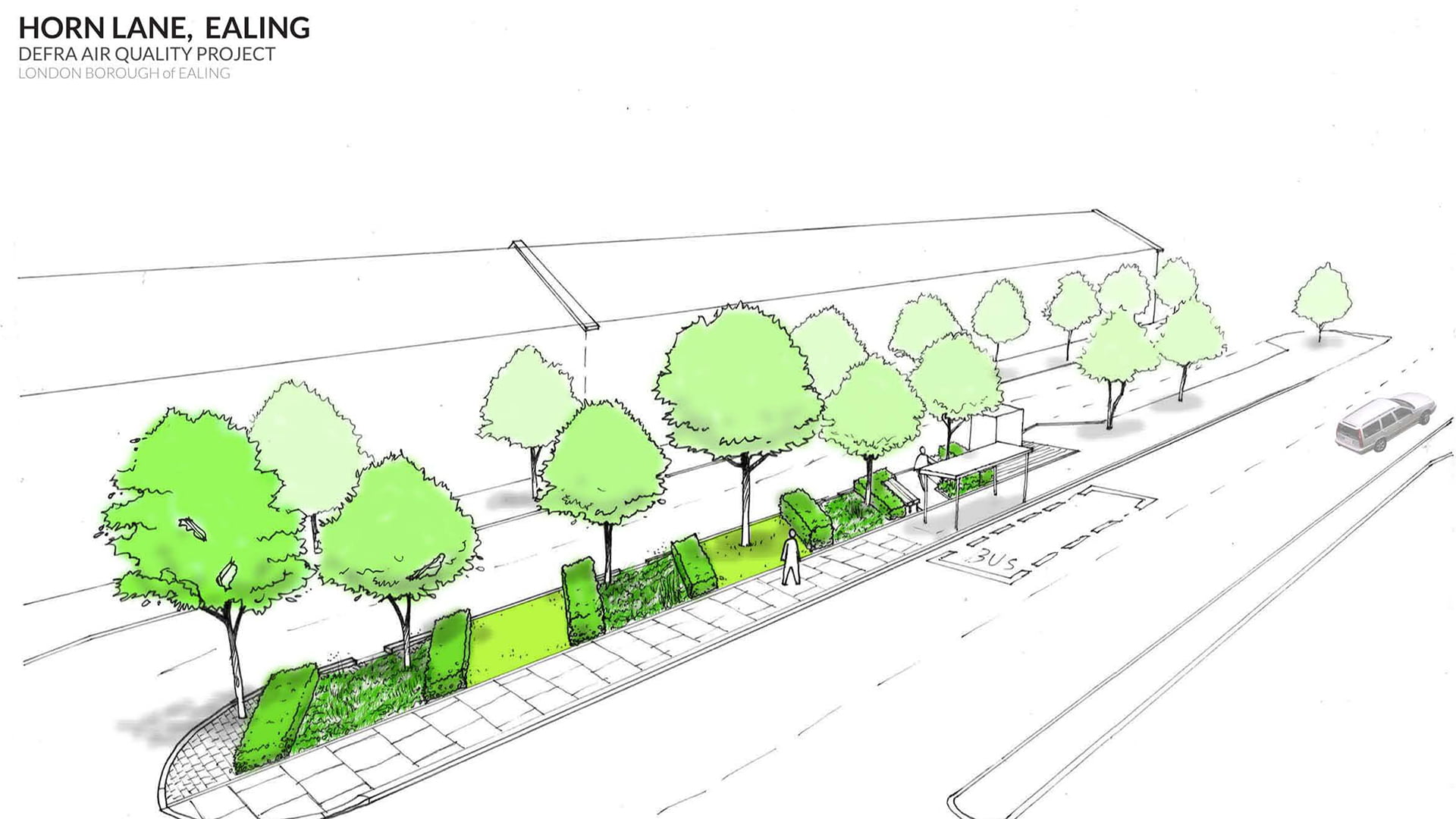





ROLE:
LOCATIONS:
CLIENT: London Borough of Ealing
Background & Objectives:
Horn Lane in Ealing suffers from poor air quality, specifically particulate pollution. This is largely due to its close proximity to the industrial activity in Acton Goods Yard, with heavy vehicles coming and going keeping dust and pollutants circulating and suspended in the air. The issue is further exacerbated by the heavy traffic which travels along Horn Lane itself. Significant improvements to air quality have been made in recent years through initiatives with the local industries, but despite these efforts there remained a risk of exceeding the 24hr mean objective for particulate matter (PM10). These particles can be inhaled into the lungs posing a danger to health.
Design Solution
Our aim was to design soft and hard landscape improvements on Horn Lane, in order to reduce the levels of particulate pollution and its harmful effects. Our Landscape Architects accessed the latest research and evidence available on the optimal vegetation solutions for mitigating pollution through deposition and dispersion. Deposition being capturing and holding the particulates from the air on the surface area of the plants. Dispersion being the transportation of particulates away from the source and the dilution of the particles through mixing the air. The type, size and position of the plants in relation to the source of pollutants and patterns of airflow are all important factors in designing a planting scheme to improve air quality.
Our objectives for the scheme were;
- To maximise particulate deposition by maximising the surface area of planting exposed to polluted air and by selecting plant species with characteristics that support particulate capture.
- To maximise pollutant dispersion by structuring the planting to encourage the mixing of polluted air near to Horn Lane with cleaner air from above.
- To ensure the long-term sustainability of the works by planting robust and long-lived species that require minimal maintenance.
- To maximise wider environmental benefits by selecting a variety of species that support biodiversity and consider how the plants might improve the microclimate for those using the space, i.e. for those waiting at the bus stop.
- To raise awareness of the role planting can play in improving local air quality by promoting the scheme, its design and the expected/realised benefits.
Impact
The site is being monitored by an air quality monitoring station located on Horn Lane. While improvements in air quality, specifically PM10 can’t be attributed solely to this scheme, it’s encouraging to see that the PM10 has reduced in the last 5 years, with the last significant reduction occurring between 2017 – 2018 (LONDON AIR). Link
